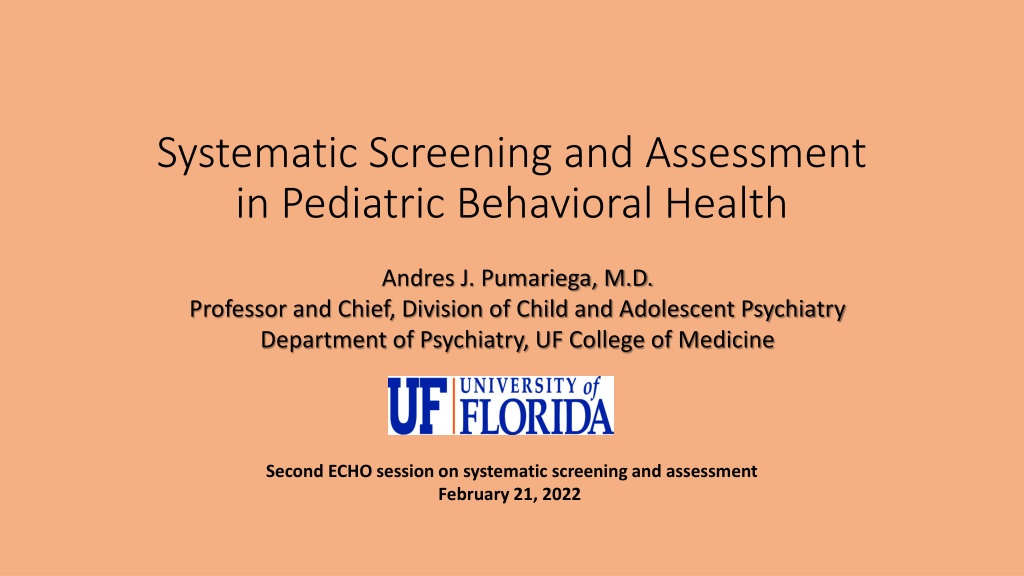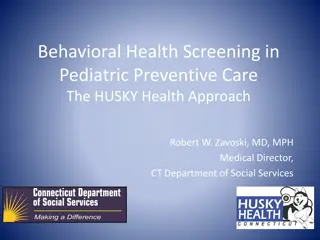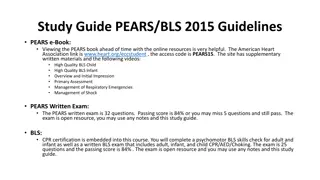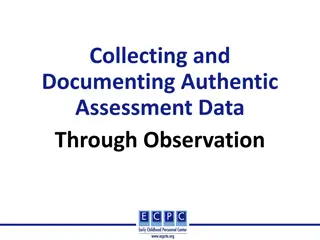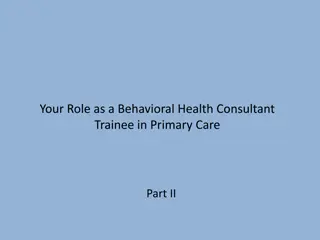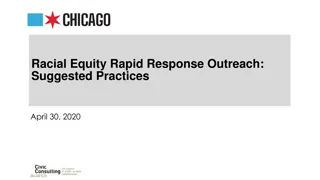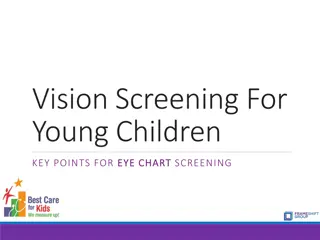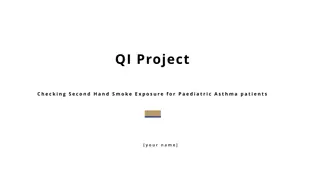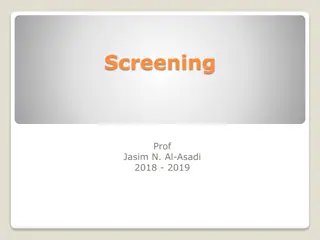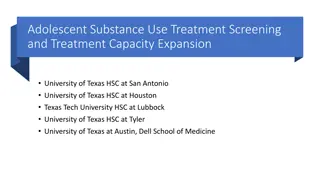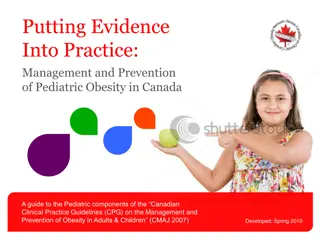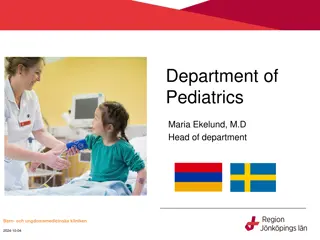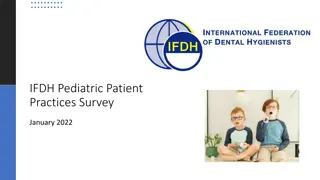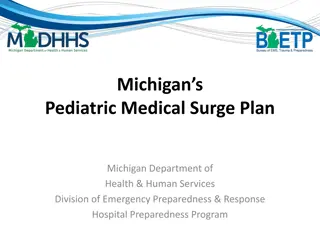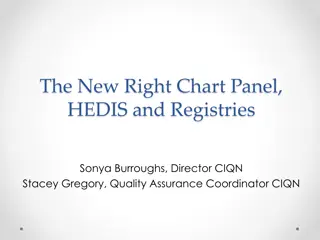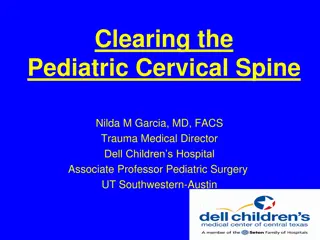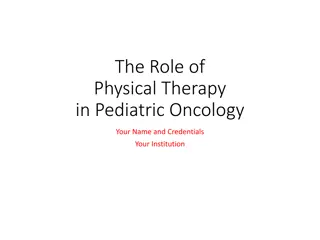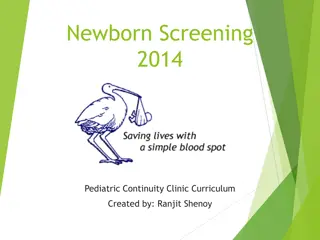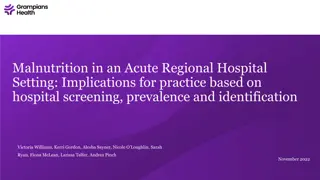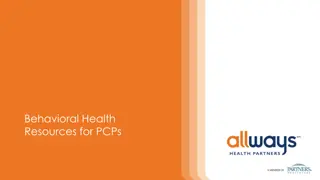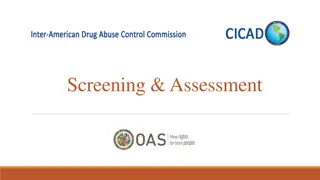Importance of Systematic Screening and Assessment in Pediatric Behavioral Health
This content discusses the significance of systematic screening and assessment tools in pediatric behavioral health. It highlights the rationale for using these tools to improve access, reduce bias, ensure comprehensive assessment, enhance validity, and efficiently triage patient needs. The case study presented underscores the value of systematic approaches in identifying and addressing mental health concerns in young patients.
- Pediatric behavioral health
- Screening tools
- Assessment instruments
- Mental health
- Systematic approach
Download Presentation

Please find below an Image/Link to download the presentation.
The content on the website is provided AS IS for your information and personal use only. It may not be sold, licensed, or shared on other websites without obtaining consent from the author. Download presentation by click this link. If you encounter any issues during the download, it is possible that the publisher has removed the file from their server.
E N D
Presentation Transcript
Systematic Screening and Assessment in Pediatric Behavioral Health Andres J. Pumariega, M.D. Professor and Chief, Division of Child and Adolescent Psychiatry Department of Psychiatry, UF College of Medicine Second ECHO session on systematic screening and assessment February 21, 2022
ECHO What does Project ECHO stand for? Project ECHO (Extension for Community Healthcare Outcomes) is an innovative telementoring program designed to create virtual communities of learners by bringing together healthcare providers and subject matter experts using videoconference technology, brief lecture presentations, and case-based learning. How does the Echo model work? ECHO is built on a core principle of case-based learning, wherein clinicians and healthcare providers from various sites attend a teleconference meeting hosted by a central hub team to present individual cases, consult with a multidisciplinary team of specialists, and learn from the cases presented by other providers.
Rationale for Use of Systematic Screen and Assessment Tools 1) Improving access and efficiency a. Shortage of pediatric behavioral health professionals b. Insufficient time to provide all children with a live evaluation upon request c. Can reliably combine PCP observations and systematic data to make diagnosis d. Can save use of full evaluation capacity for higher risk/ complexity patients 2) Reducing bias 2) Clinician interviews are often not thorough (too much to cover) 3) Biases about patients can lead clinicians to skip significant symptoms or indications for diagnosis 4) Often occurs with racial/ ethnic minority youth
Rationale for Systematic Screen and Assessment Tools 3. Comprehensiveness of assessment a) Screener prompts covers broader coverage of problems; can cover the waterfront in main areas; then symptom rater probes deeper into significant areas (simulates skip and probe approach) 4. Validity of information a) Screeners are psychometricaly valid and reliable; validated with clinical and normal groups b) Patients tend to respond more openly to self-administered tools rather than to interviews (less self- screening) c) Information collected in structured format that minimizes hedging d) Scores are often normed within large population groups with cut-offs for clinically significant scores e) Added validity from other informant sources 5. Efficient triaging of patient level of need a) Individual patient- Ready identification of possible diagnoses and MH need (do not wase checking multiple) b) Population- Early identification of those at risk 6. Measurement based care a) In primary care b) In psychiatric settings time
Case 2: 20 year old female PATIENT SUMMARY (age/ gender/presenting problem or symptoms): Patient is a 20-year-old Caucasian female seen by PCP with primary complaints of depression, anxiety, and panic symptoms. She graduated high school. She recently moved to this area. PCP and family expressed concerns that patient might have more than anxiety and depression since there is a family history of bipolar disorder, but the patient herself has had no manic episodes. She has been on multiple medications including Celexa, Prozac, Zoloft, and now Effexor, and is in therapy with the LCSW at PMG. She has had no response but no side effects with the other medications but no side effects so far with Effexor. However, the patient is very skittish on increasing doses, and only recently did PCP increase her Effexor XR to 75 milligrams. She also misses frequent appointments. She does receive relief from hydroxyzine for panic symptoms. Screening results: PSC 17- I = 10, E = 4, A = 4; PHQ-9- 19, MDQ = 10, SCARED = 56 (child), 50 (parent) with (included GAD, Panic, Social anxiety); GAD 7 = 13
Case 2: 20 year old female PATIENT SUMMARY (cont.) On the psychosocial history her mother report describes her as being a negative thinker, with problems of depression anxiety since she was a preteen. She did have a traumatic experience of a sexual assault at age 16 by a boy at her high school, and has significant problems with anger towards males and trust issues. She did attempt suicide with a Tylenol overdose as, and only revealed to mother a few months later. At times she has become aggressive towards the mother, pushing and scratching her during episodes. FAMILY HISTORY: Father-substance abuse, depression, anxiety, possible bipolar disorder; siblings- anxiety disorders; father's side of the family-anxiety and bipolar disorder FAMILY STRESSORS: Father's substance abuse, which caused financial problems and conflict between parents, having lost her home a few times in childhood, history of rape, reported emotional abuse by her father, in process of parental divorce
Case 2: 20 year old female SECOND DOC TO DOC: Patient underwent televideo psychological evaluation with psychology post-doctoral fellow. He was able to convincingly rule out Bipolar Disorder and rule in PTSD, MDD recurrent, and GAD. He strongly recommended Trauma-focused CBT as mainstay treatment. Fellow presented findings from eval to PCP. PCP reported patient has tolerated slow up titration of Effexor XR and more cooperative with treatment. Reiterated recommendation for Intuniv 1 mg to 2-3 mg for hyperstartle sx. of PTSD as well. We discussed how PCP can address patient's avoidance of therapy due to avoidance of distress (but how exposure to memories is necessary for therapy to proceed; patient avoided details with Dr Huffman). Discussed therapy referral and fellow will present options to family to follow through. Recommended mother and sister also participate in therapy since they had been through traumatic experiences jointly.
Take away points: Family concerns and family history can drive consult questions- need to attend but look at other evidence Use of adjunctive assessment tools- (which one was used here? Which other(s) could have also been used?) Screening and assessment tools can be useful and even diagnostic but sometimes not conclusive (how?) Response to prior treatment can in itself rule out other conditions (how in this case??) At times direct evaluation may be necessary to a rrive at definitive diagnostic Patient behavior resulting from the condition itself may interfere with treatment (which behavior most of all?)
